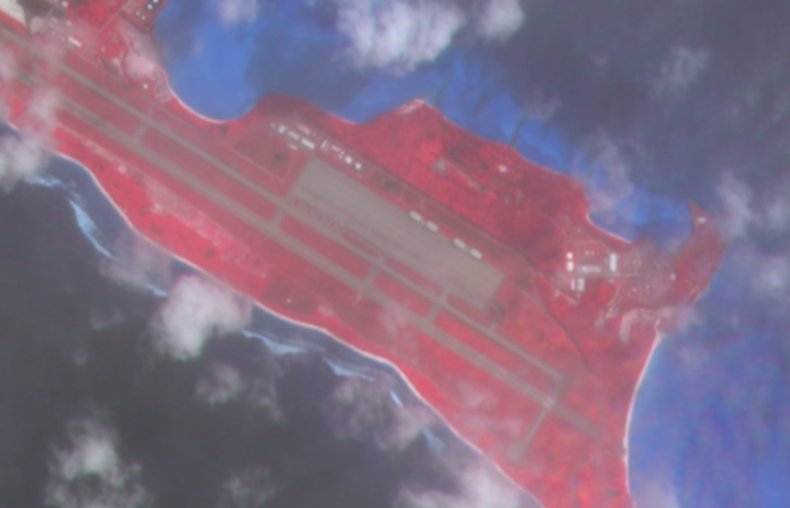Login to Continue Learning
Satellite imagery this week captured the drawdown of U.S. forces at the remote Diego Garcia naval base in the Indian Ocean, after its central role in the Pentagon’s campaign of signals and deception leading up to U.S. airstrikes against Iran.
In late March, analysts studying open-source imagery noticed an increase in U.S. Air Force deployments to the coral atoll amid Middle East tensions. U.S. Defense Secretary Pete Hegseth later revealed these were part of efforts to deter Iran and its proxies.
The U.S. Defense Department and Iran’s Foreign Ministry did not immediately respond to separate written requests for comment.
Why It Matters
Diego Garcia, located in the center of the Indian Ocean, is a strategic, cross-regional location—2,000-3,000 miles from both Iran and China—that is key to U.S. power projection in both halves of the Indo-Pacific region. This remote island base allows the United States to rapidly respond to crises by pre-positioning naval and air assets near potential flashpoints.
The base gained public attention amid a spike in U.S.-Iran tensions over Tehran’s nuclear program, which was on the list of disputes President Donald Trump sought to resolve upon his return to office. When diplomacy stalled between Washington and Tehran after the June U.S. bombing of Iranian nuclear sites and clashes with Israel, Trump threatened to strike again if Iran didn’t return to the negotiating table.
What To Know
Diego Garcia’s remoteness made it an ideal staging area for military operations, unlike bases in Qatar and nearby states that were within most Iranian missile ranges. In the past, it served as a launchpad for wars in Afghanistan and Iraq and later became a hub for Middle East, South Asia, and East African operations.
However, when Trump gave the order to strike Iran in June, the attack did not originate from Diego Garcia. Instead, the Pentagon flew seven B-2 bombers from Missouri, largely avoiding detection and maximizing surprise.
Drag slider
compare photos



A new ESA photograph captured on Monday, rendered in false color to avoid dense clouds, showed the end of Diego Garcia’s temporary role as a tool for military signaling. Empty parking aprons were seen where U.S. jet fighters and strategic bombers once stood, clear warnings to Tehran.
At its height in May, forces surged to the Indian Ocean base including F-15 fighter aircraft, B-2 and B-52 bombers, KC-135 tankers, and C-17 transport planes, according to publicly available analysis. This preceded two weeks of Israeli airstrikes on Iran’s military infrastructure and Iranian ballistic attacks on Israel.
“We probably ensured that Diego Garcia was ready, but ultimately, the president decided on a different plan focused on preserving security,” retired U.S. Army General Joseph Votel told Newsweek.
What People Are Saying
U.S. Army General (retired) Joseph Votel, former CENTCOM commander and current research fellow at the Middle East Institute: “The threat of Iran will continue to drive U.S. interests and military strategy in the region for the foreseeable future. [Iran’s enrichment capability] has certainly been delayed but not completely destroyed. So we have to continue to be concerned.”
Shahin Berenji, assistant professor at the U.S. Naval War College: “Given what happened in this past crisis, just because the U.S. doesn’t have prepositioned forces in Diego Garcia, it doesn’t mean it can’t strike Iran with strategic bombers from the homeland.”
Berenji’s views were his own and did not represent those of the college.
What Happens Next
Diego Garcia will remain a key strategic hub for the United States in the Indo-Pacific region, even if it isn’t used in every operation.



















